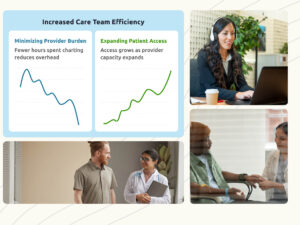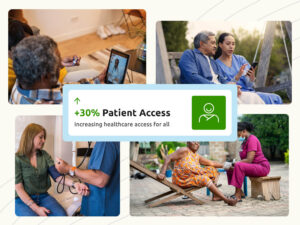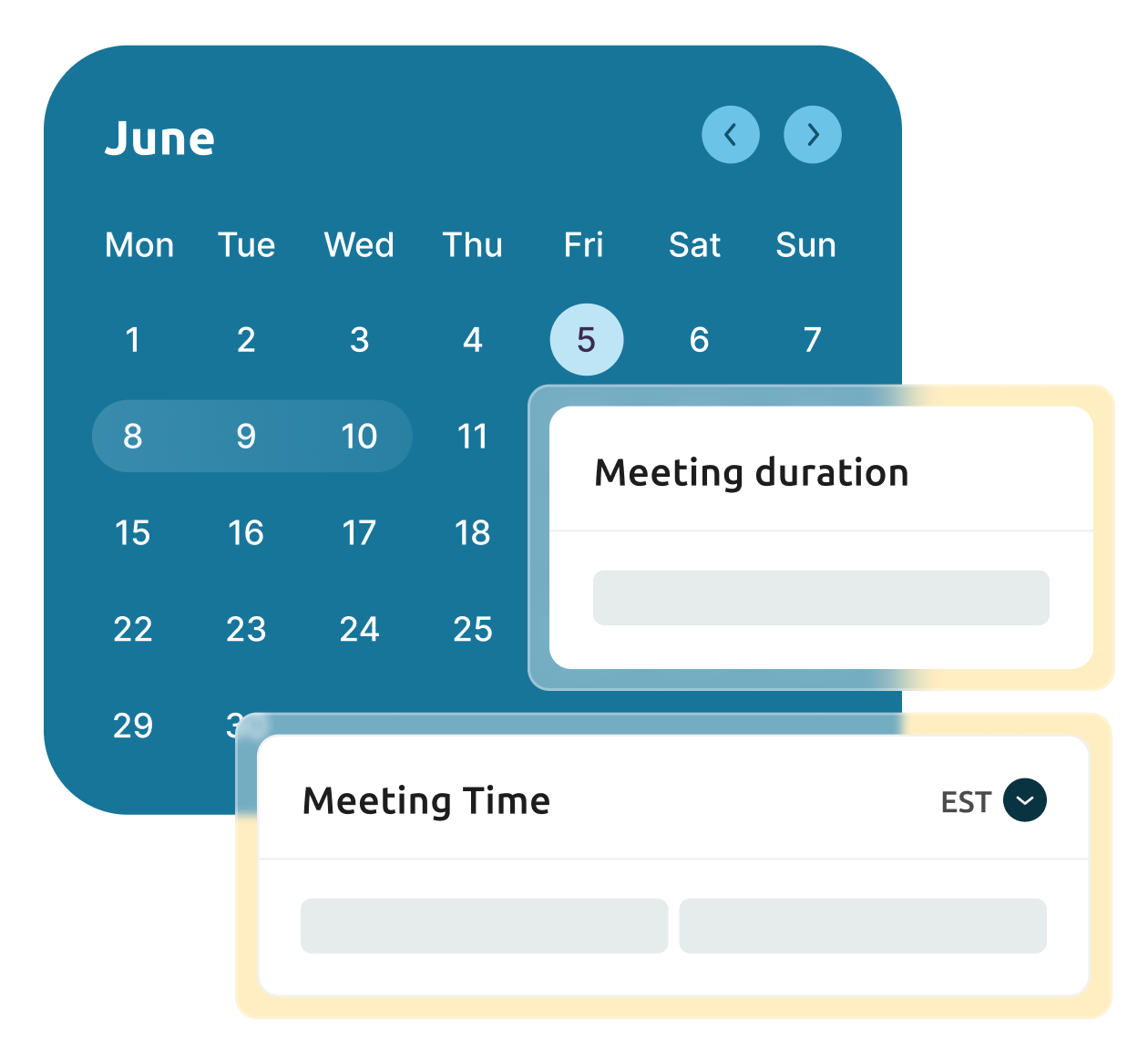Patient Experience
Before Scribe-X, providers at a busy family medicine clinic spent nearly half of each visit behind a screen, typing notes and navigating EHRs. This led to delays, rushed interactions, and patients feeling overlooked.
With Scribe-X, real-time documentation support frees providers to focus on what matters: their patients. Appointments begin on time, eye contact is returned, and conversations are deepened. Instead of screen-staring, patients see providers who are present, attentive, and engaged. Patients now leave visits feeling heard, respected, and confident.
The result? This renewed focus on the patient experience helps build trust and stronger relationships, resulting in higher satisfaction scores for both patients and providers.
Population Health
Before Scribe-X, providers at a clinic serving a high-risk population struggled to capture the complexity of each patient’s condition during busy appointments. Important details—like comorbidities, social determinants of health, or subtle signs of disease progression—were sometimes missed or under-documented due to time pressure and EHR fatigue.
With Scribe-X, every visit is documented by trained scribes who understand the nuances of population health. Comorbidities are captured, diagnosis codes are accurate, and care coordination notes are detailed. Providers have a clearer picture of each patient’s risks and needs, enabling more strategic, preventative care across their population.
The result? Chronic conditions are managed more effectively, risk adjustment improves, and teams use better data to guide care decisions without increasing provider workload.
Reducing Costs
Before Scribe-X, at a mid-sized primary care practice, providers were constantly playing catch-up with charting, often finishing documentation hours or days later. This led to delayed billing cycles, missed charge opportunities, and an increasing number of claim denials due to incomplete or inaccurate documentation.
With Scribe-X, the story changed. Scribes complete accurate documentation in real time, so providers can close charts the same day, leading to faster billing and reliable charge capture. Coders now have the detailed information they need to assign higher-level codes appropriately, reducing denials and increasing revenue per visit without providers squeezing more work into already-packed schedules.
The result? Documentation is completed faster and more accurately, leading to a healthier revenue cycle and stronger financial performance.
Care Team Well-being
Before Scribe-X, a busy outpatient clinic had providers who were burning out. Long days of back-to-back appointments were followed by evenings spent catching up on notes, often 2 to 3 hours of documentation after hours. Morale was low, turnover was creeping up, and the joy of practicing medicine was fading.
With Scribe-X, trained remote medical scribes manage documentation in real time, and providers can now finish their charts in under 45 minutes, often before they even leave the clinic. That extra time means earlier evenings, fewer weekend charting sessions, and space to reconnect with family, hobbies, and the parts of life that recharge them.
The result? Providers report higher job satisfaction, reduced burnout, and better retention, creating a more energized and reliable care team.
Health Equity
Before Scribe-X, access to care was a persistent challenge in a rural health clinic serving a diverse and often underserved population. Providers were stretched thin, juggling documentation demands that left less time for follow-ups, same-day visits, or meaningful outreach to patients who needed extra support, particularly those facing language barriers or transportation hurdles.
With Scribe-X, the clinic unlocked more capacity without hiring more staff. With remote medical scribes handling documentation in real time, providers can see more patients per day and dedicate more energy to those who often fall through the cracks. Missed visits can be followed up on promptly thanks to detailed notes, and patient encounters now reflect, not just clinical facts, but cultural nuances and preferred languages, helping to build trust across communities.
The result? Clinics are able to serve more patients, expand access to care, and take meaningful steps toward closing gaps in health outcomes.





